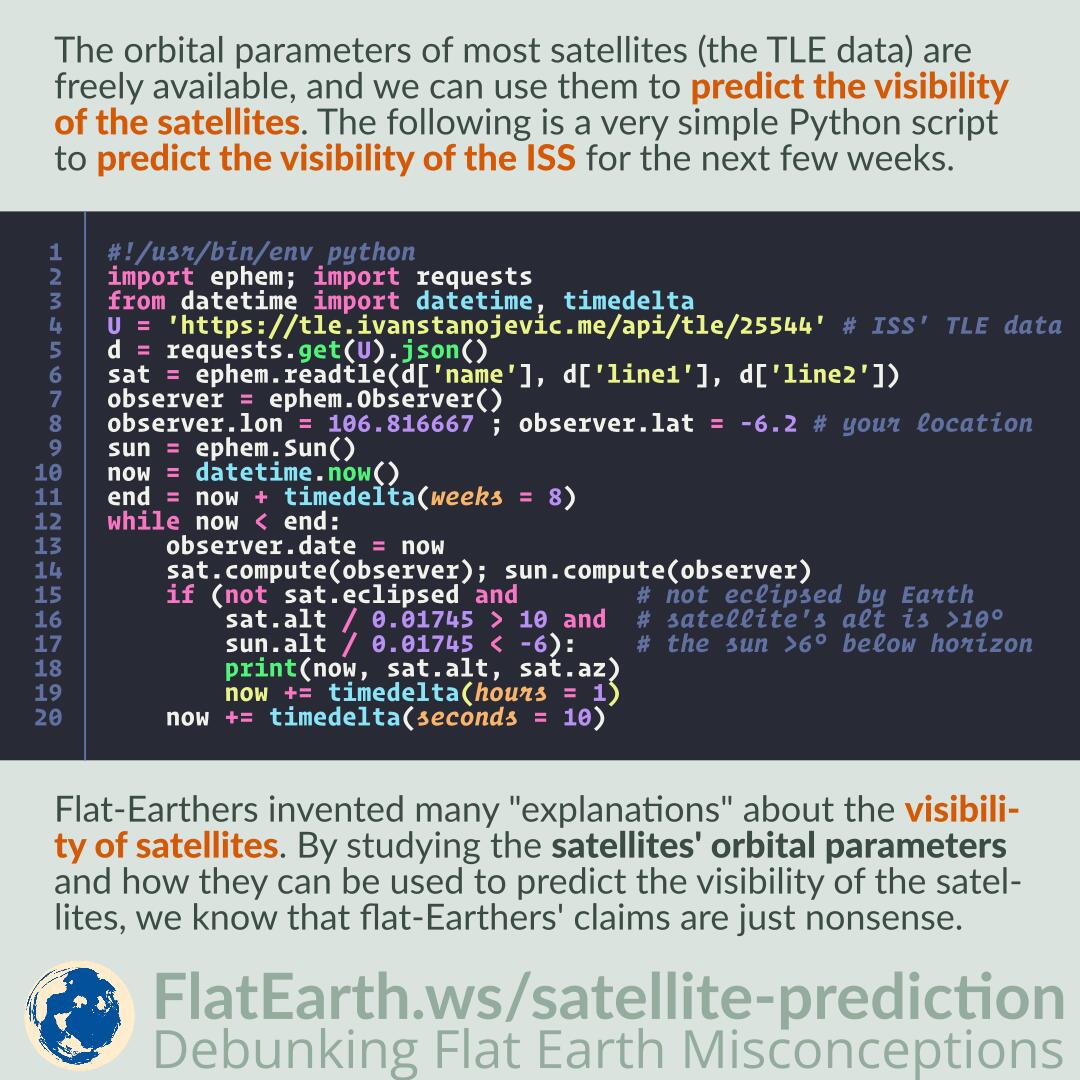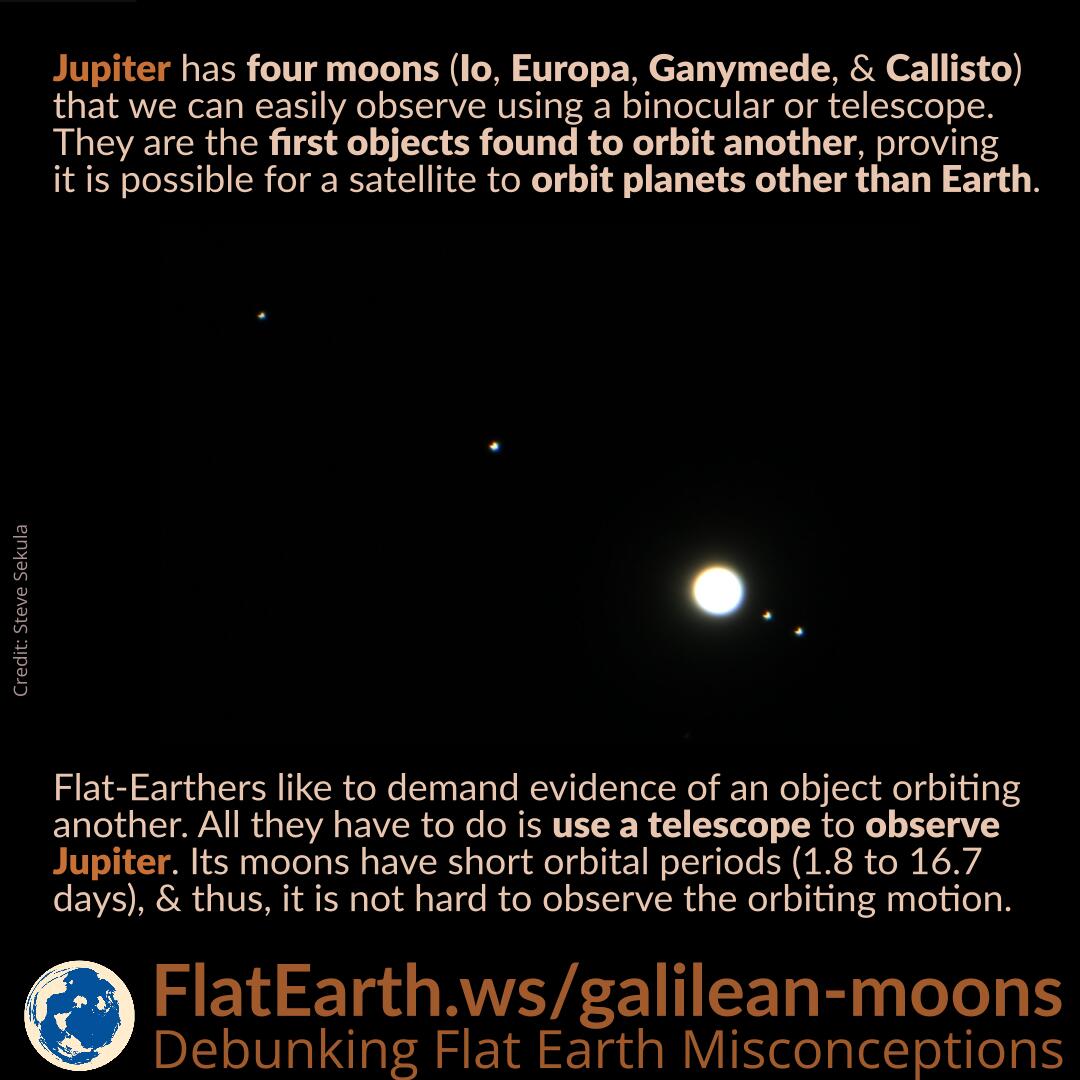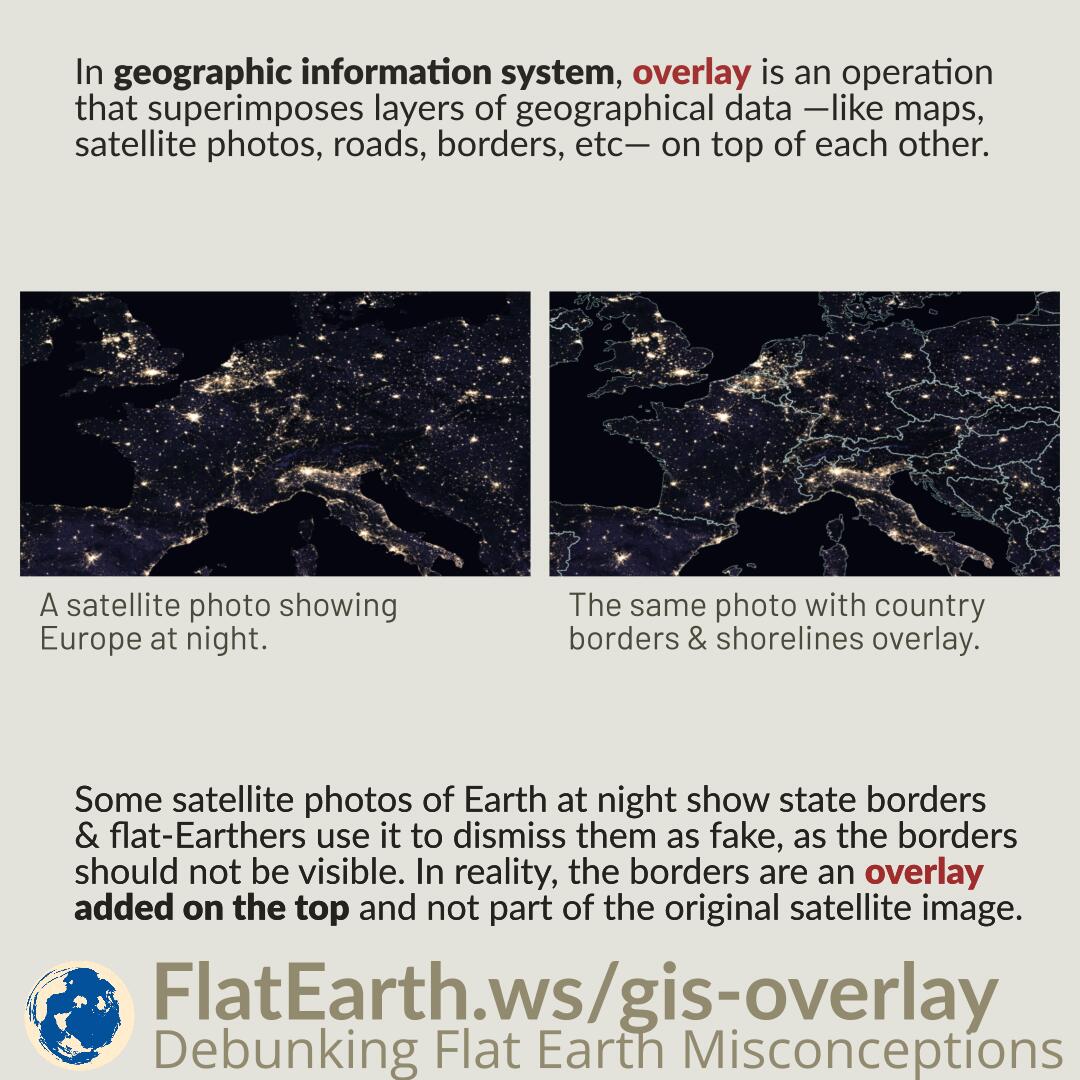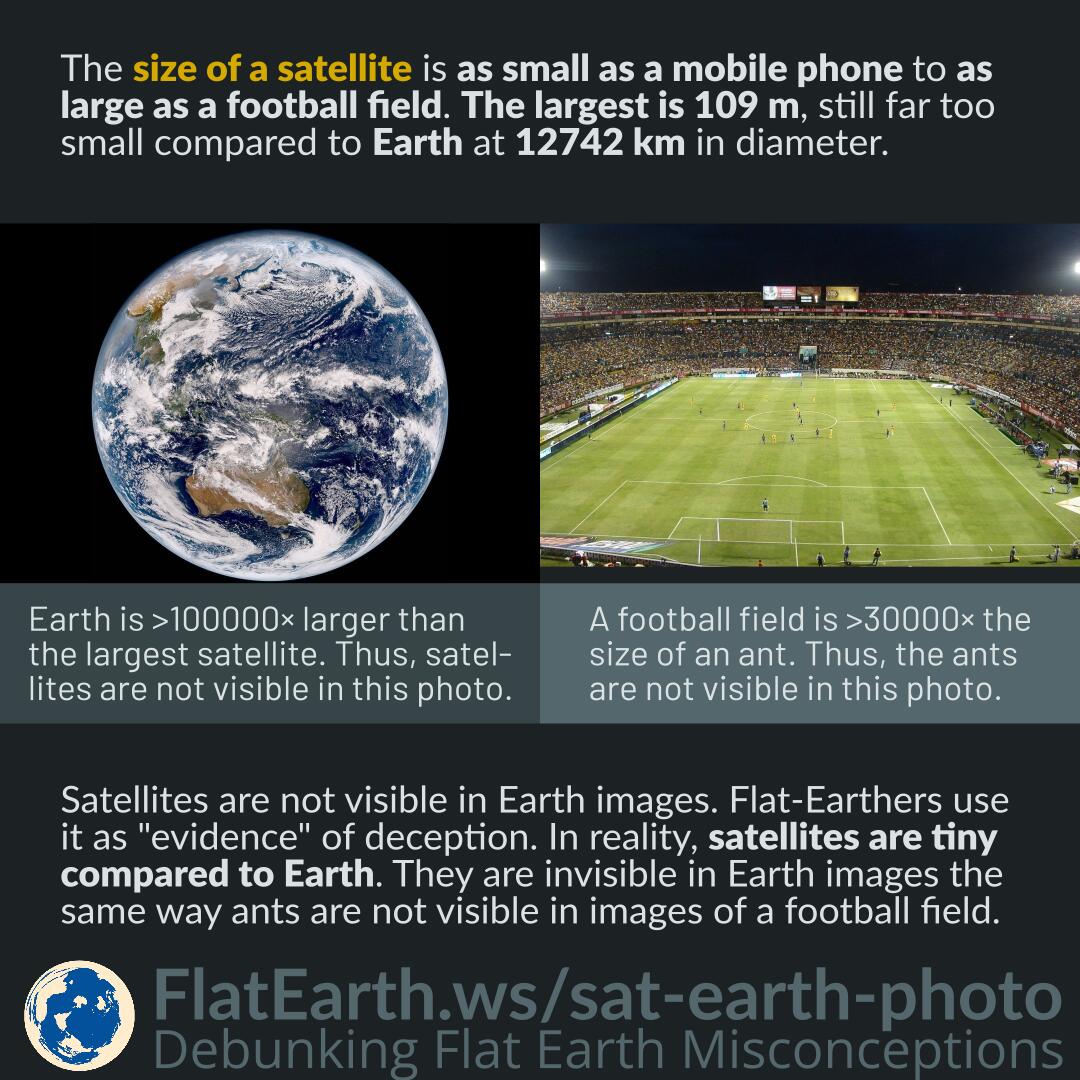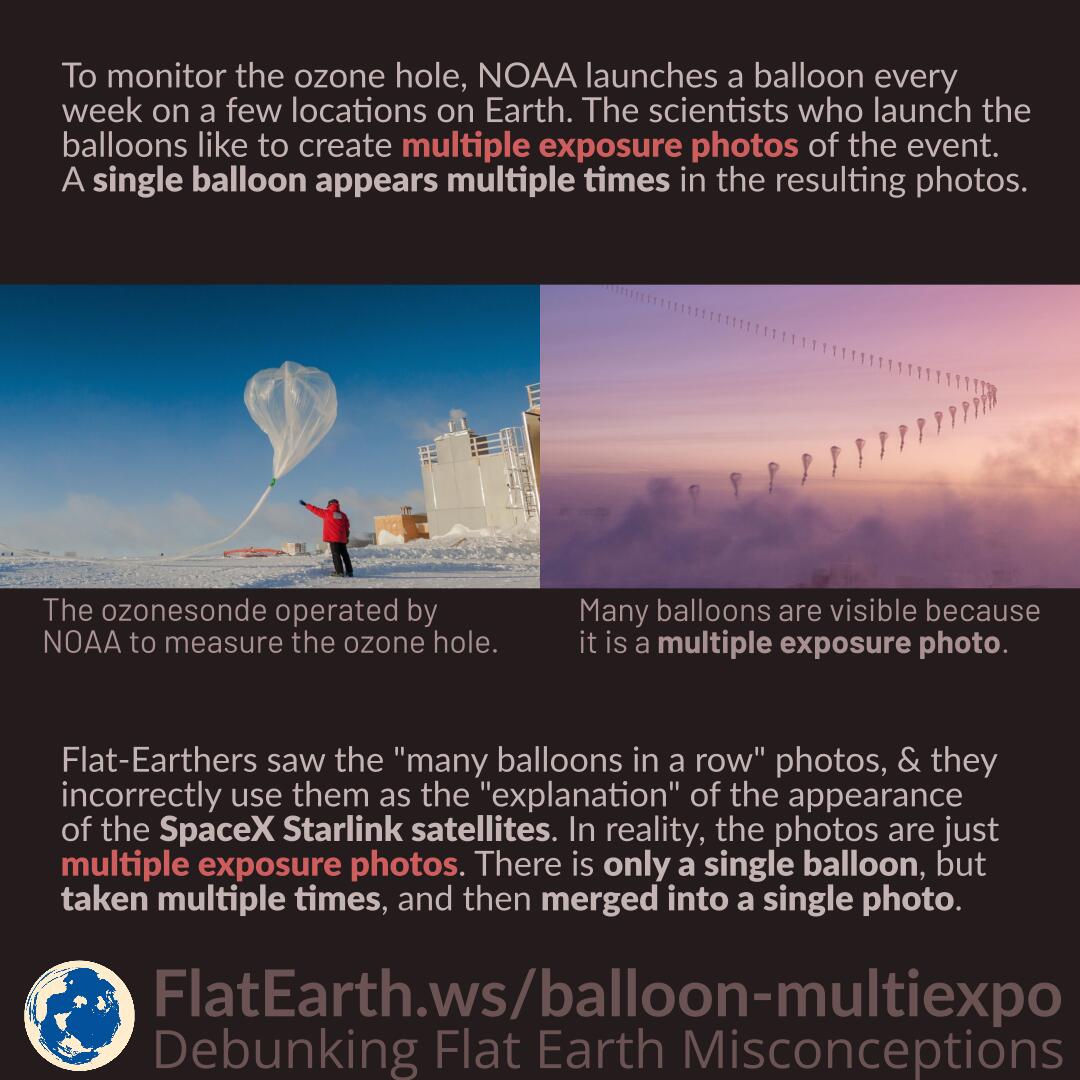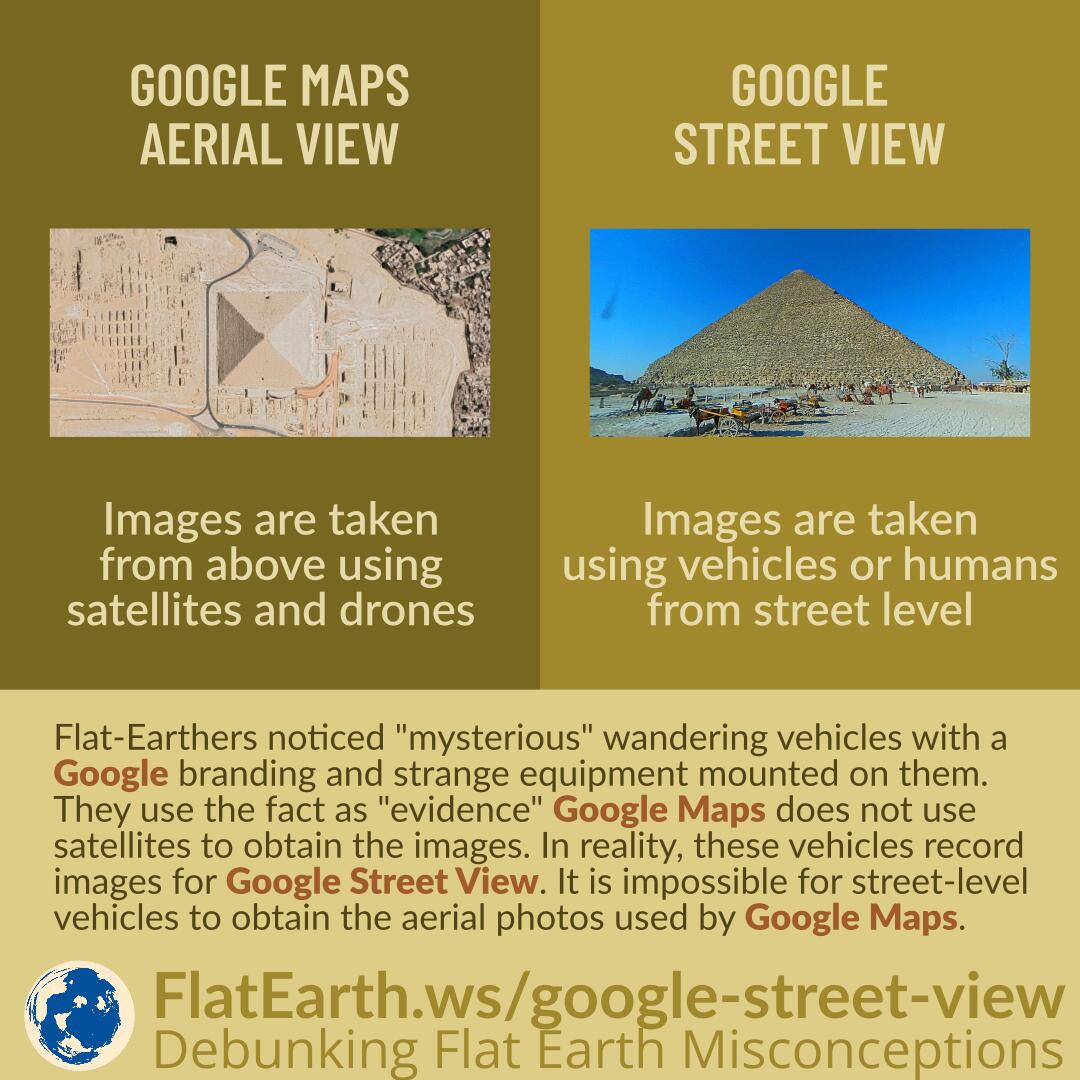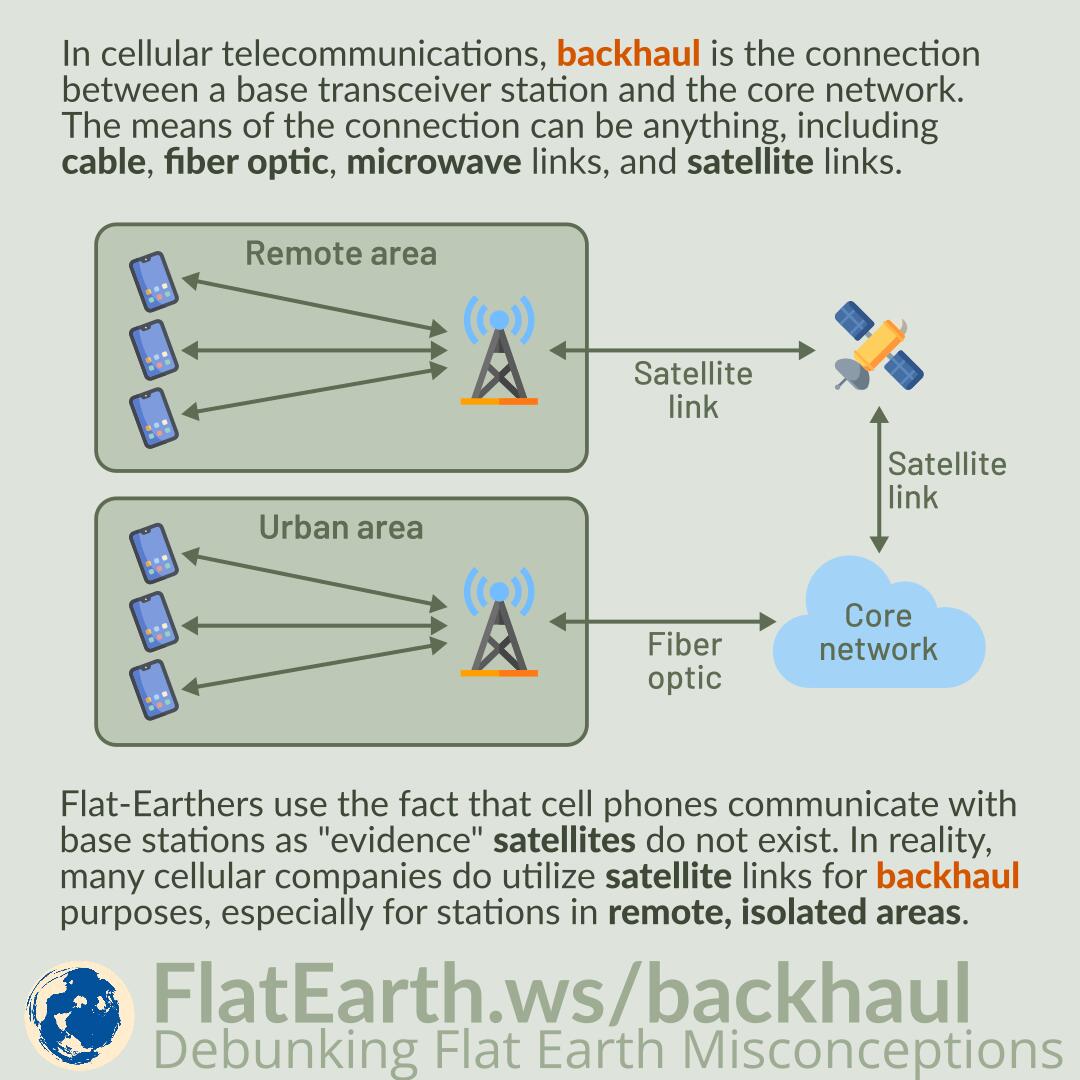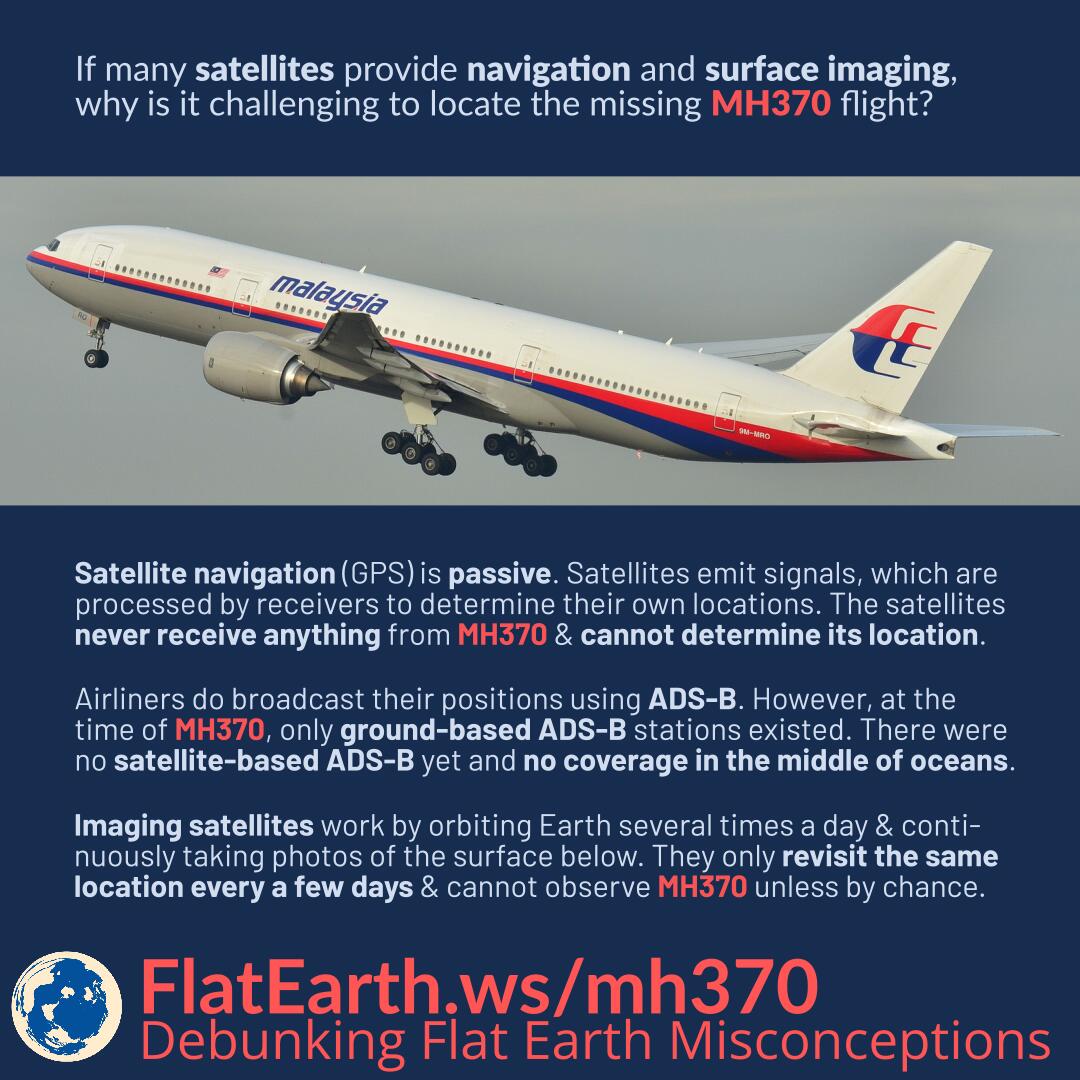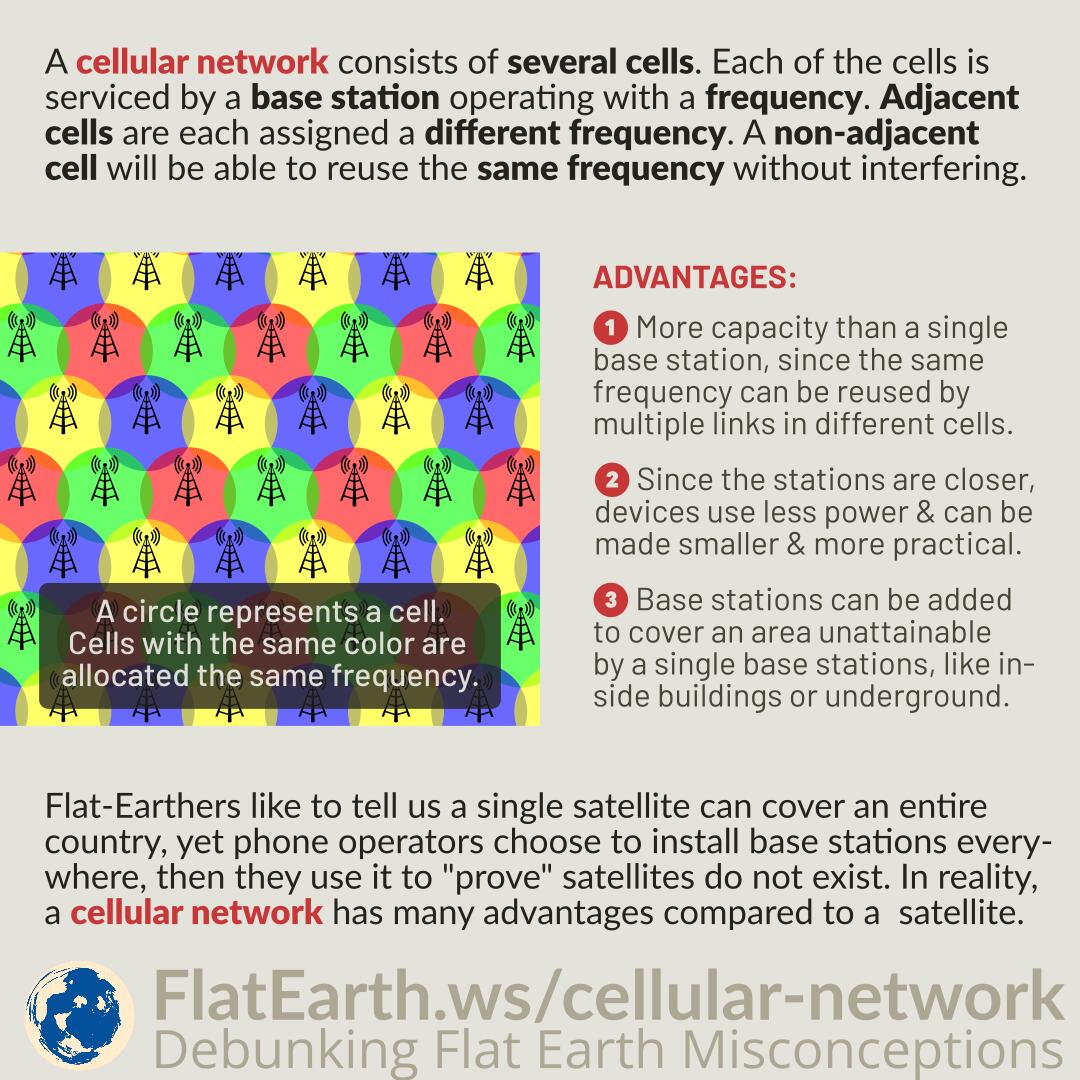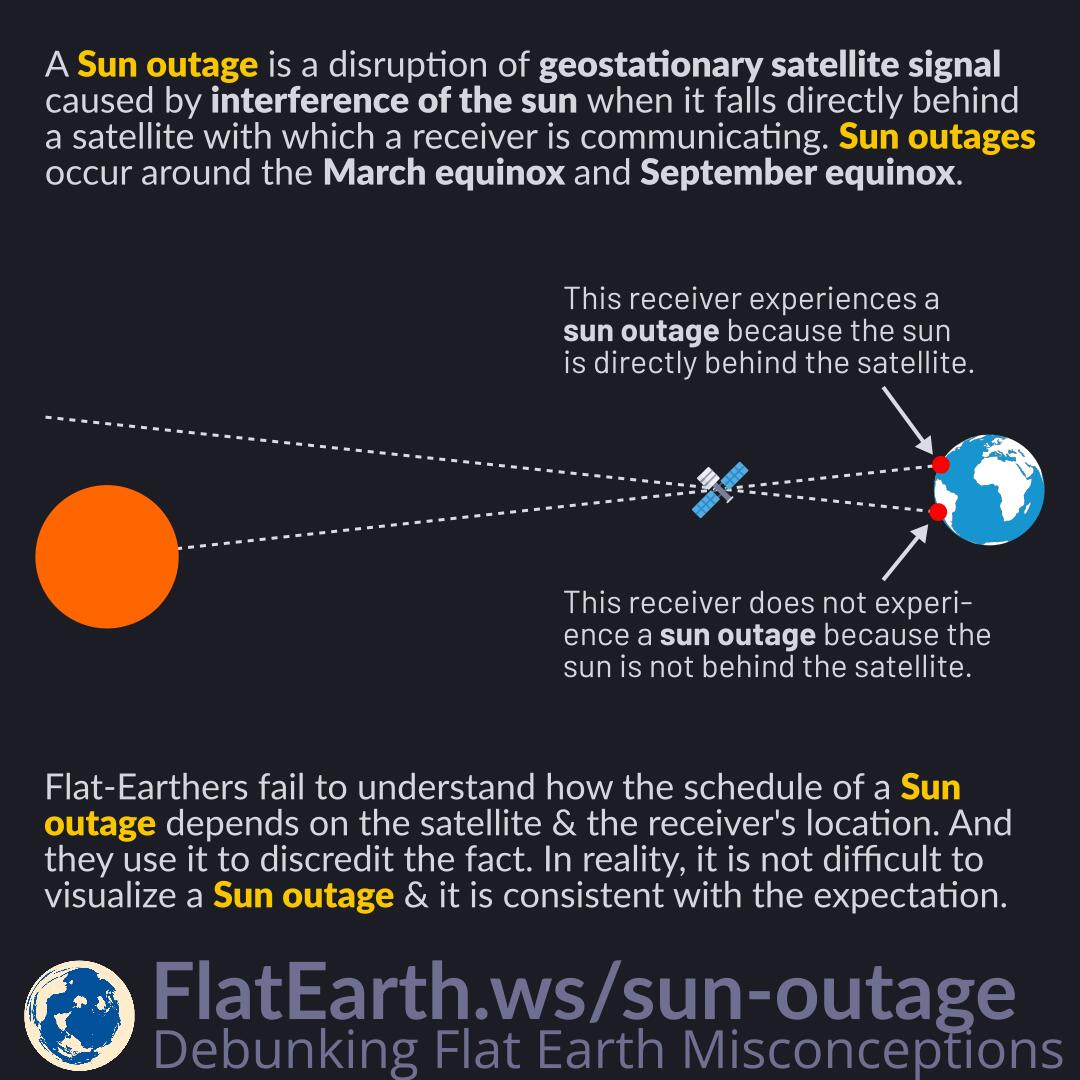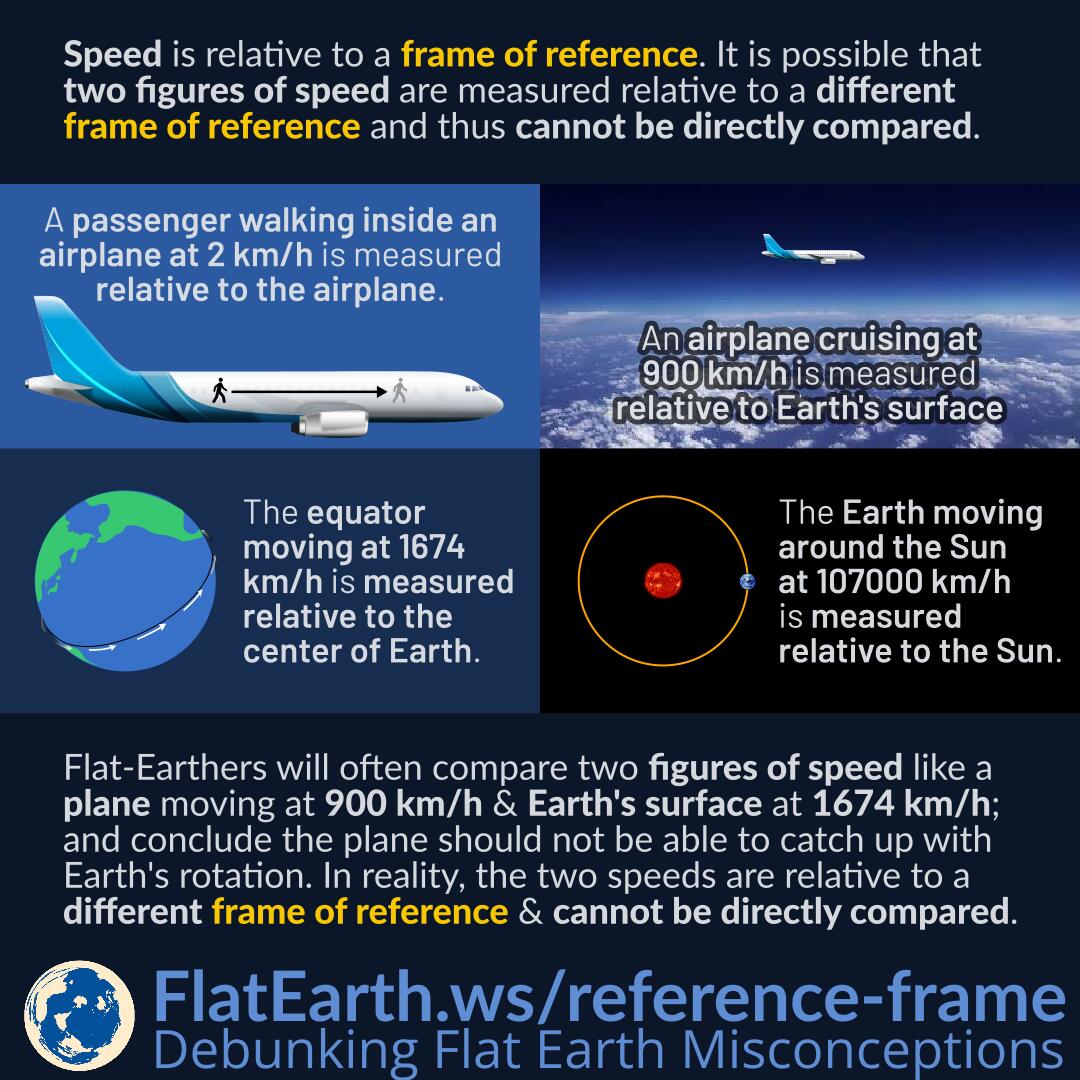The orbital parameters of most satellites (the TLE data) are freely available, and we can use them to predict the visibility of the satellites. The following is a very simple Python script to predict the visibility of the ISS for the next few weeks.
Flat-Earthers invented many “explanations” about the visibility of satellites. By studying the satellites’ orbital parameters and how they can be used to predict the visibility of the satellites, we know that flat-Earthers’ claims are just nonsense.


